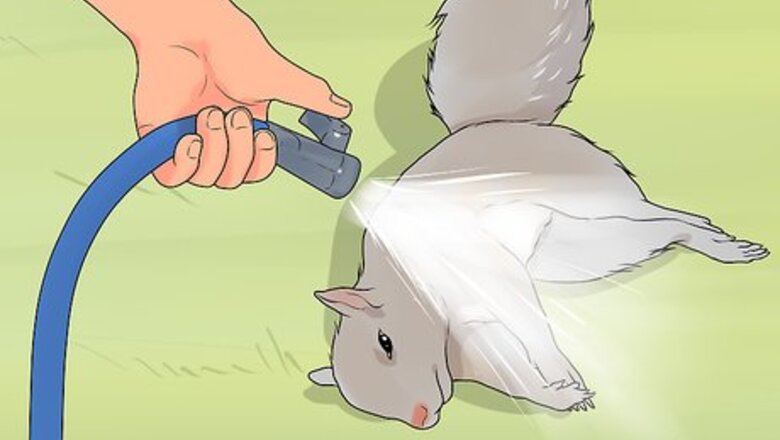
views
Skinning the Squirrel
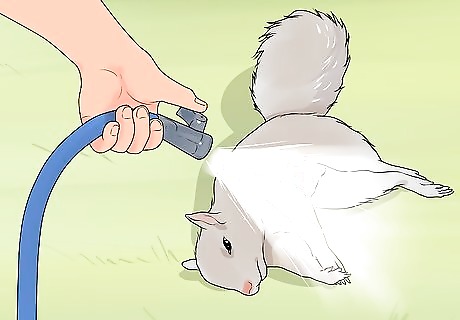
Get the squirrel thoroughly wet before starting. You can either soak the carcass in a bucket of water or spray it down with a hose. Getting the carcass wet before you begin cleaning it will help prevent hair from getting stuck on the meat. Getting the carcass wet will also help loosen it if it has become stiff.
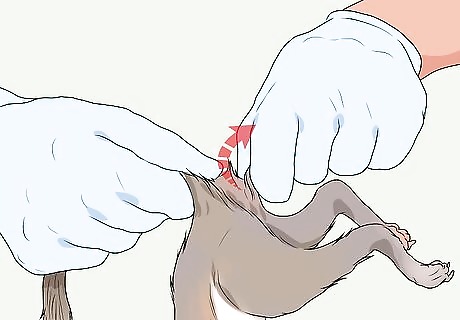
Pluck out hair at the base of the squirrel’s tail. You can use your thumb and index finger or a pair of large tweezers to pluck the hair. Removing this hair will make it easier for you to cut through the tailbone. Pluck out just enough hair to give yourself a clean area to cut, or around 2 centimetres (0.79 in) in width. Don’t forget to put on your field dressing gloves before you start to skin and clean the squirrel.
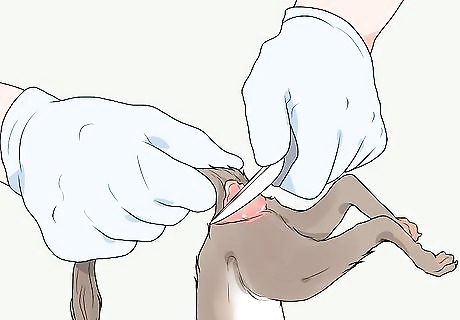
Make a 1 ⁄2 in (3.8 cm) horizontal cut through the base of the tailbone. Use a pocket knife, small paring knife, or other small, sharp knife. Lift the tail with one hand and make the incision with the other. The cut should be just deep enough to get under the skin. The base of the tailbone is just above the squirrel’s anus. Be careful not to cut into the hide on top of the rump or sever the tail. You’ll want to keep the tail attached to the skin to simplify the following steps.
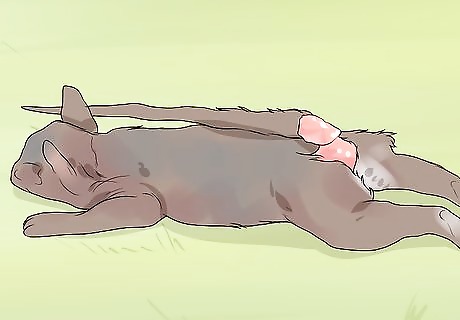
Put the squirrel on a solid surface on the ground. Not that you’ve made the initial incision through the base of the tailbone, lay the squirrel on its stomach on a low stump, board, or flat rock. The surface you choose should be low enough for you to put your foot down on it. Make sure the squirrel’s legs are outstretched. Clean any debris off the surface before starting.
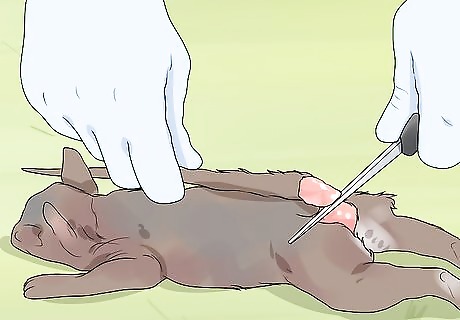
Extend your incision ⁄2–1 inch (1.3–2.5 cm) towards the squirrel’s head. Put your foot on the squirrel’s outstretched back legs to keep it steady. Then, as you hold the tail with one hand, slowly cut up along the squirrel’s back. When making the cut, be careful to cut just deep enough to separate the skin from the meat and no deeper. Make the cut about 1 cm (0.39 in) deep.

Make an angled cut in front of each hind leg. Position your knife where you made your initial cut, just in front of the top of the squirrel’s right leg. Then cut down at a 45-degree angle towards the squirrel’s belly. Do the same on the left side of the carcass. Only cut deep enough to separate the meat from the skin, or around 1 cm (0.39 in) deep.
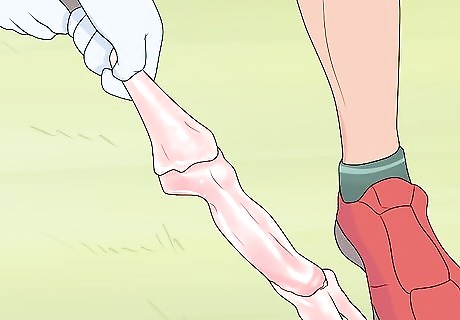
Peel the hide until it reaches the foot joints of the front legs. With your feet on the squirrel’s back legs, pull up on the tail and slowly begin to peel the hide off the flesh. Stop peeling when you can see the foot joints of the front legs. Peeling the hide off will take a little muscle, but be careful not to pull so hard that you pull the hide all the way off.
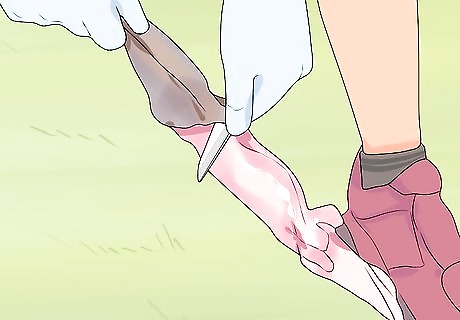
Flip the carcass over and peel the hide off the belly to the back feet. Standing on the tail, use your fingers to peel off the hide. Stop peeling when you reach the joints right above the back feet. The skin should peel right off, but if you have any trouble, you can use your knife to gently separate the skin from the belly.
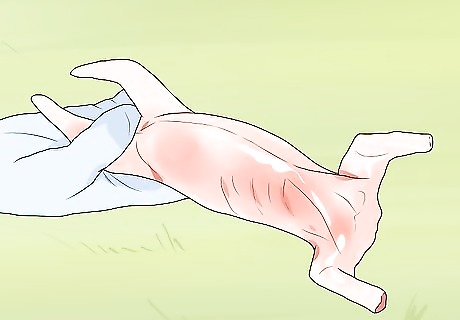
Remove the head and feet. It is easiest to use a pair of game shears for this step. Cut through the meat of the neck and snap the bone to remove the head, and cut at the joints just above the feet to remove them and the remaining hide. Dispose of the hide, head, and entrails by burying them or carrying them out and taking them to a landfill.
Cleaning the Carcass
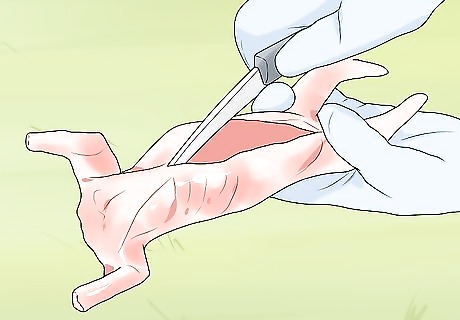
Make a shallow cut lengthwise along the center of the belly. Once you’ve skinned the squirrel, you can start cleaning out the entrails. Start by pinching the stomach and making a small 3 cm (1.2 in) cut between the hind legs. Continue cutting until the you reach the neck. Be careful not to cut too deeply. If the knife goes in too far, you might accidentally cut the entrails. If you’re using a pair of game shears, another option is to insert the tip of the shears into the anus and start cutting up through the pelvis to the neck. Before starting to cut into the squirrel’s belly, examine the carcass closely and remove any hair that is still stuck to it.
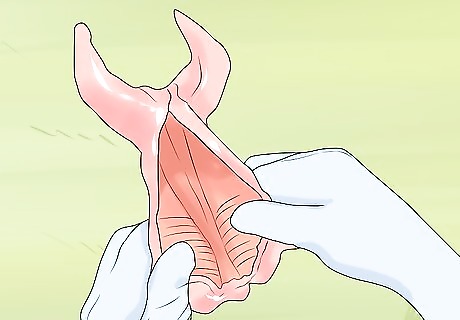
Remove the entrails and clean out the internal cavity. Now that entrails are exposed, use 2 fingers to grab the heart, lungs, and esophagus. Then pull the innards down toward the tail and then out. With this motion, you should be able to remove all the entrails. Clean out any pieces you missed. You'll be left with a clean internal cavity. You can inspect the liver to see if the squirrel was healthy. The liver of a healthy squirrel should be a rich, solid red color.
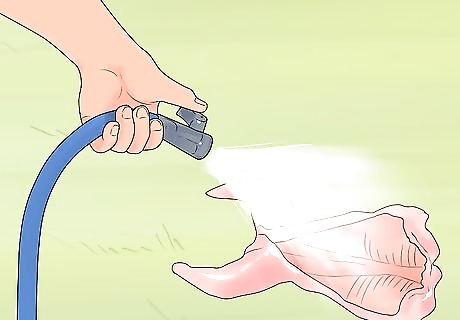
Wash out the body cavity if you have access to fresh water. Use a hose to thoroughly rinse the outside and inside of your cleaned squirrel. Make sure to cover the entire carcass with water. A few seconds of rinsing with a running hose should suffice.
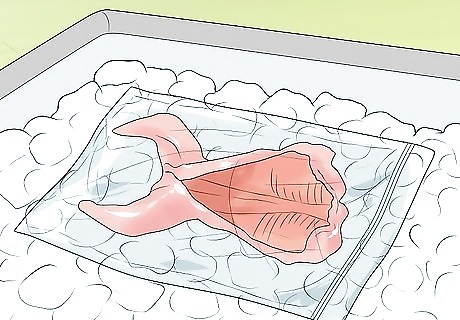
Put your cleaned carcass on ice. Now that you’ve skinned and cleaned the squirrel carcass, place it in a gallon-sized resealable bag, and place the bag in a cooler filled with ice. Put the carcass on ice as soon as possible after cleaning it to keep the meat fresh. Then, try to move it into a refrigerator or freezer as soon as possible. You can store squirrel meat in a refrigerator at 35–40 °F (2–4 °C) for 1 – 2 days or in a freezer at 0 °F (−18 °C) for up to 12 months.



















Comments
0 comment